How Many Types Of Coral Reefs Are There?
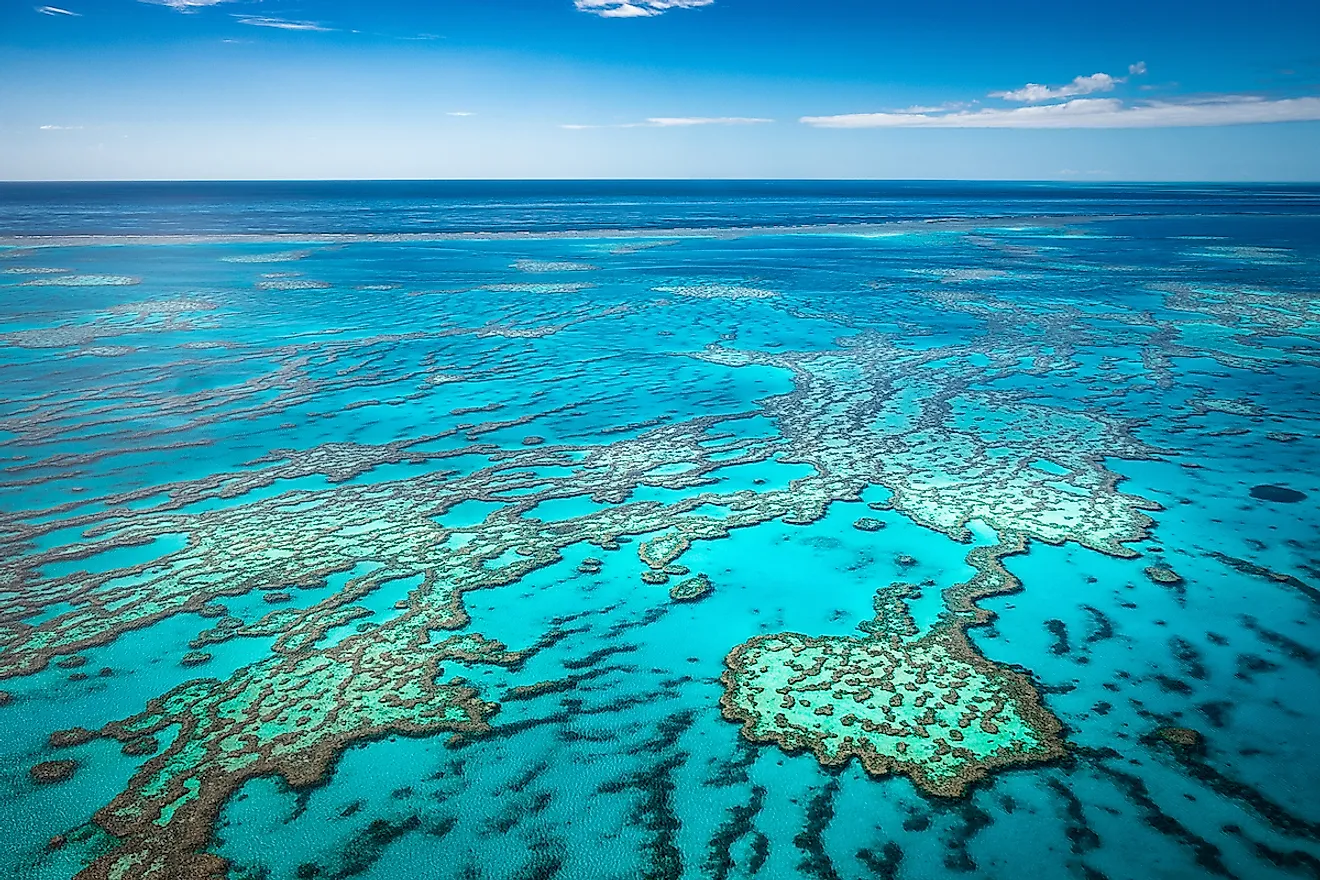
- Coral reefs are highly productive marine ecosystems that are formed mainly of calcium carbonate secreted by the colonies of reef-building coral polyps.
- Coral reefs occupy less than 0.1% of the world's ocean area, yet they support 25% of the entire planet's marine species.
- Depending upon their mode of formation, there are three classical types of coral reefs - Fringing reefs, Barrier reefs and Atolls.
Coral reefs are highly productive marine ecosystems that are formed mainly of calcium carbonate secreted by the colonies of reef-building coral polyps. Often referred to as ‘rainforests of the sea’ these coral reef ecosystems are widely known for their biological diversity as well as for providing some key ecosystem goods and services. Although coral reefs occupy less than 0.1% of the world’s ocean area, yet they support 25% of the entire planet’s marine species – that includes an incredible variety of fishes, crustaceans, cnidarians, echinoderms, mollusks, sponges, and other marine fauna. It has also been estimated that about 500 million people worldwide are dependent on the coral reefs for their livelihood.
Content:
Types Of Coral Reefs
The basic classification of coral reefs dates back to the time of Sir Charles Darwin, who in his book “The Structure and Distribution of Coral Reefs”, had outlined his theory on the formation of atoll reefs. Depending upon their mode of formation, three classical types of coral reefs can be found in various parts of the world.
Fringing Reefs/ Shore Reefs
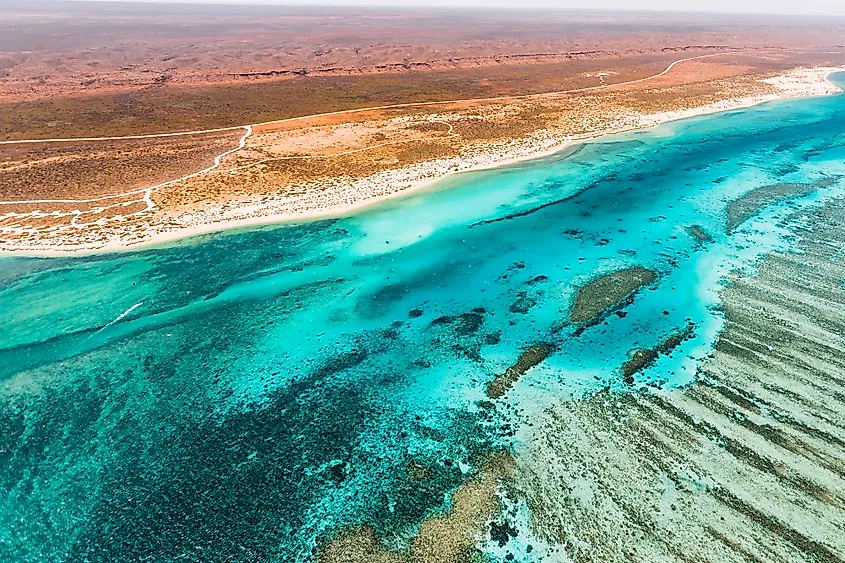
The rocky reefs which lie close to the shores of volcanic islands or along the edges of a continent are referred to as the fringing reefs. This type of reef extends out to a distance of a few miles from the shore, with the reef edge facing the sea. A shallow water channel (lagoon) separates the reef-edge from the shore. The fringing reefs are composed of two main parts: the widest part of the reef which lies closest to the shore is commonly called the ‘reef flat’ or the back reef; while the other steep part which faces the open ocean is referred to as the ‘reef slope’ or the fore reef. Fringing reefs are the most common type and are considered to be the youngest of the 3 types of coral reef. They are mainly composed of mud, coral sand, and dead and living coral colonies.
These reefs host less species diversity within their ecosystem and are found off the southern coast of Florida, the New Hebrides Society Islands, and the Gulf of Mannar (India). The world’s largest fringing reef – the Ningaloo Reef, spans more than 260km along the western coast of Australia. The world’s best-developed fringing reefs can be found along the shores of the Red Sea.
Barrier Reefs
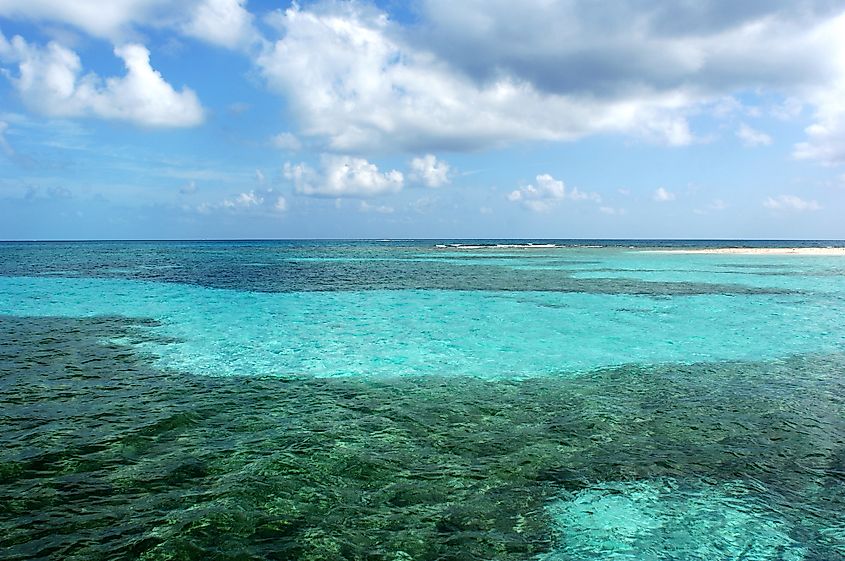
These extensive linear reef complexes develop along the edges of continental shores and extend as broken irregular rings around the island or coasts, running almost parallel to the shore. The barrier reefs are separated from the mainland by a wide and deep lagoon. At their shallowest point, these reefs reach the water’s surface forming a “barrier” or a wall-like structure. Barrier reefs are the less common type and are considered to be the largest among the 3 types of coral reef.
The most notable example of this type of reef is the 1,500 km long “Great Barrier Reef” along the north-eastern coast of Australia. Other major examples include the Belize Barrier Reef and the New Caledonian Barrier Reef. The Belize Barrier Reef is the world’s 2nd largest barrier reef.
Atolls
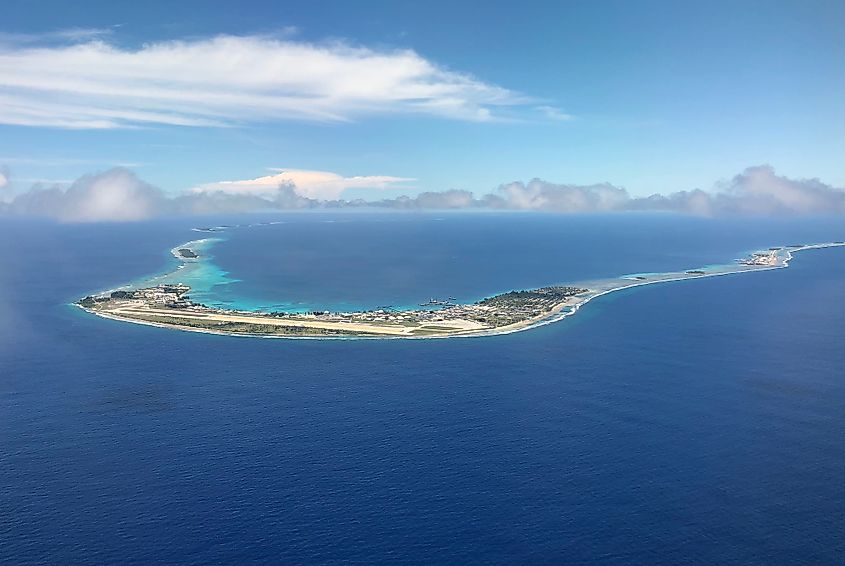
An atoll is a ring-like or horseshoe-shaped reef that partially or completely encircles an 80-150m deep central lagoon. The atolls are generally situated in the middle of the sea, far away from the deep-sea platforms. They are usually formed when volcanic islands that are surrounded by fringing reefs, subside into the sea. These fringing reefs then continue to grow and form circles with the lagoons enclosed within. This circular ring is broken in few places to form channels and allow the free movement of water connecting the central lagoon with the open sea. The atoll reefs host more species diversity compared to the fringing and barrier reefs.
Most of the known atolls are found in the Pacific Ocean and are mainly concentrated in Caroline Island, Marshall Island, Coral Sea Island, the Tuamotu Island, and several island groups including – Tokelau, Tuvalu, and Kiribati. The smaller atolls in the Atlantic Ocean are found in the eastern part of Nicaragua. Other notable examples include Rose Atoll, Kure Atoll, Fiji Atolls, Funafuti Atoll of Ellice, Ontong Java Reef, and the Huvadhu Atoll in the Maldives. Bermuda is sometimes referred to as the “northernmost atoll” but it is generally a “pseudo-atoll”. Great Chagos Bank is the most significant atoll structure that occupies an area of 4,881 sq. miles and is situated in the Indian Ocean. The Bikini Atoll in the Pacific Ocean is famous for atomic and hydrogen bomb tests.
Other Reef Types
Apart from these classical reef types, scientists and researchers have also identified some other different types of coral reefs. As per observations of Spalding et al., there are five main reef types – fringing reef, barrier reef, atoll, platform reef, and patch reef.
Platform Reef
Platform reefs are formed mainly on the continental shelf as well as in the open ocean. These reefs are variable in size and grow in all directions; where the large reefs extend a couple of miles while the smaller ones extend only a few feet. These reefs are usually found in the southern Great Barrier Reef as well as in other island groups.
Patch Reef
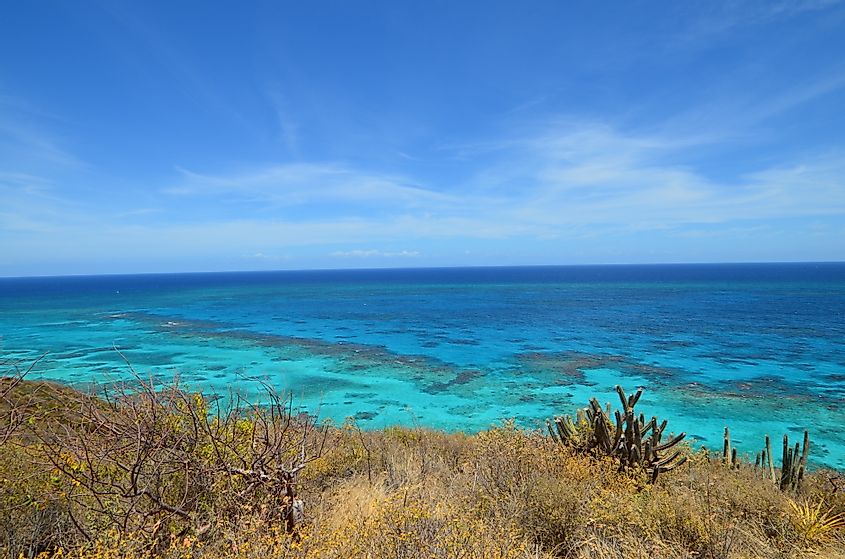
These small isolated reefs are usually found between fringing reefs and barrier reefs and grow from the continental shelf or the open bottom of the island platform. Varying in size, these reefs rarely reach the water surface and are physically separated by sand rings. Most notable examples include the patch reefs of St. Croix, St. John, and the reefs of the Florida Reef Tract. These reefs also provide a safe haven for many marine species.











